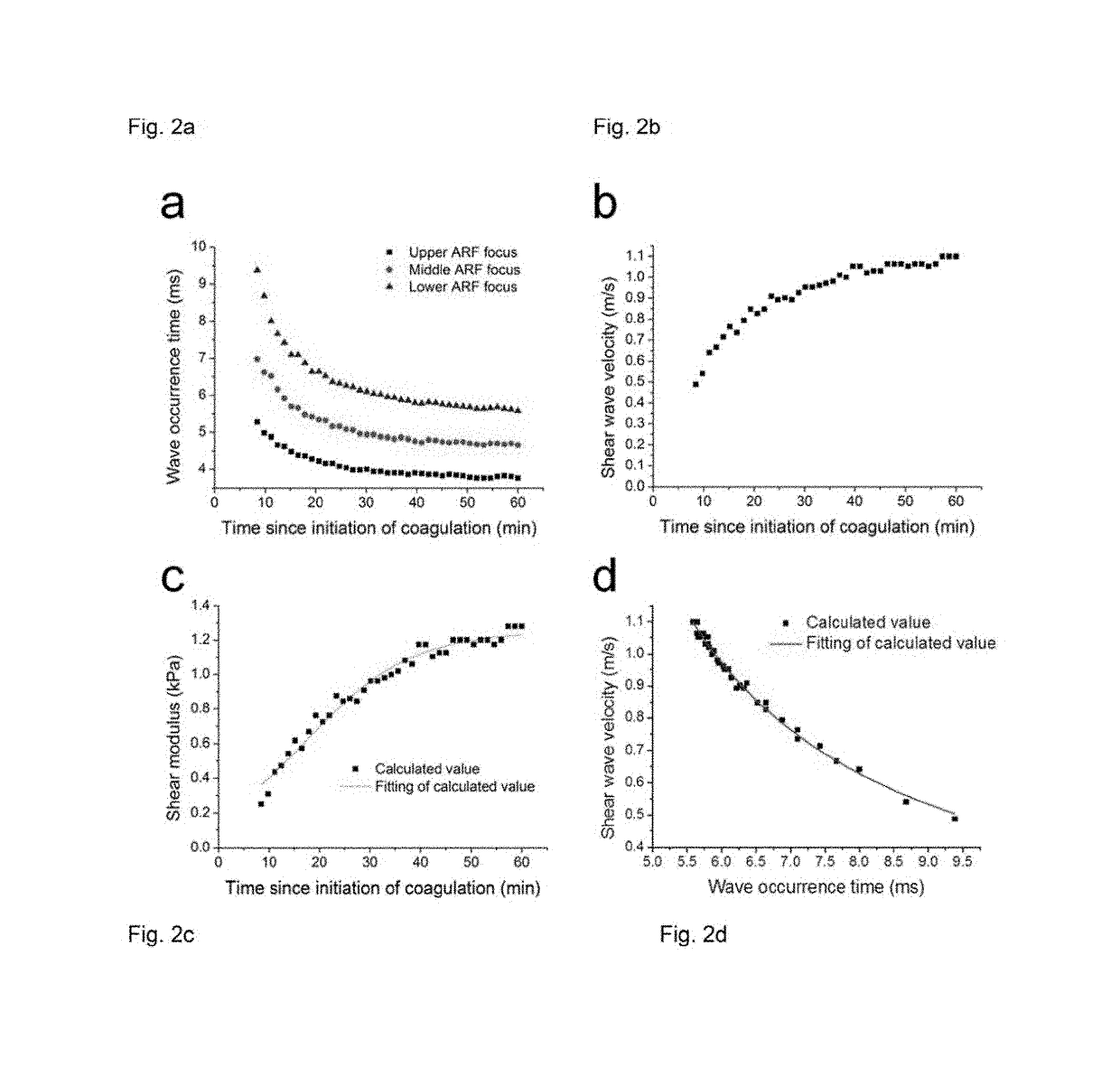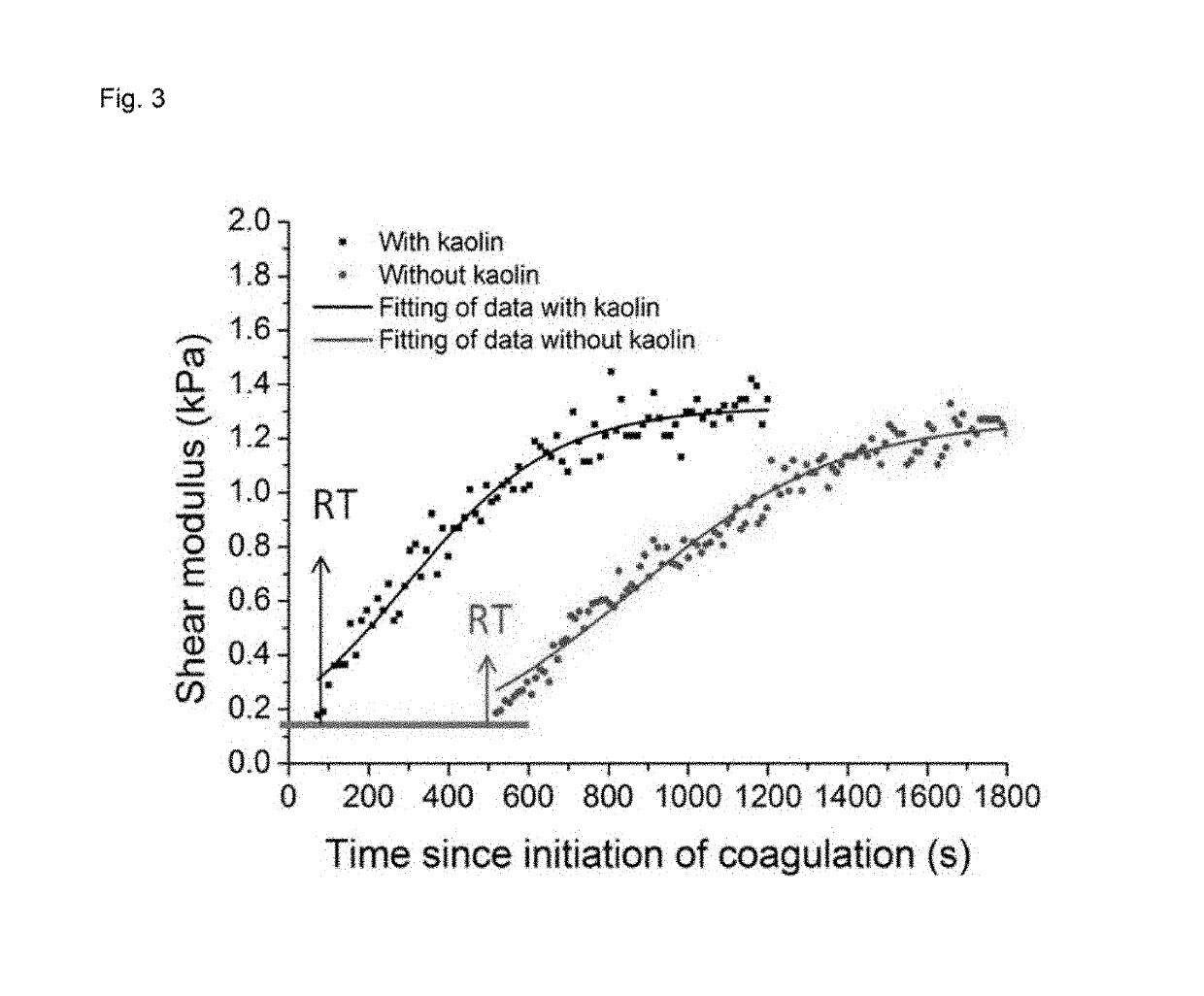Assessment of blood coagulation using an acoustic radiation force based optical coherence elastography (ARF-OCE)
a technology of optical coherence and acoustic radiation, applied in the field of arf systems and oce, can solve the problems of difficult to maintain a precarious condition, limited value of tests, and often too long turnaround time for reliable tests, so as to increase blood coagulability and viscosity, and increase plasma fibrinogen concentration
- Summary
- Abstract
- Description
- Claims
- Application Information
AI Technical Summary
Benefits of technology
Problems solved by technology
Method used
Image
Examples
Embodiment Construction
[0025]Before considering the results of the study, turn to the ARFOE-OCE setup used to demonstrate the methodology. The experimental setup for the ARFOE-OCE is shown in FIG. 5. For ARF generation, an ultrasonic transducer 18 with a resonant frequency of 4.5 MHz is driven by the amplified sine wave at 160 V peak-to-peak using a function generator 20 and amplifier 22. The blood sample 24 is disposed in a box 26 with a window 28 of plastic wrap provided for the ultrasound wave transmission. The box 26 and the transducer 28 are immersed in water 30 for impedance matching of the ultrasound wave into the blood sample 24. The OCT system 32 is conventional and is based on a swept source 34 with a central wavelength of 1310 nm and an A-line speed of 50 kHz. The light from the swept laser source 34 is split into the sample arm 36 and the reference arm 38 with a power of 90% and 10% by 90 / 10 coupler 40, respectively. Reference arm 38 includes circulator 42, and lens system 44 coupling light to...
PUM
| Property | Measurement | Unit |
|---|---|---|
| concentration | aaaaa | aaaaa |
| resonant frequency | aaaaa | aaaaa |
| central wavelength | aaaaa | aaaaa |
Abstract
Description
Claims
Application Information
 Login to View More
Login to View More - R&D
- Intellectual Property
- Life Sciences
- Materials
- Tech Scout
- Unparalleled Data Quality
- Higher Quality Content
- 60% Fewer Hallucinations
Browse by: Latest US Patents, China's latest patents, Technical Efficacy Thesaurus, Application Domain, Technology Topic, Popular Technical Reports.
© 2025 PatSnap. All rights reserved.Legal|Privacy policy|Modern Slavery Act Transparency Statement|Sitemap|About US| Contact US: help@patsnap.com



